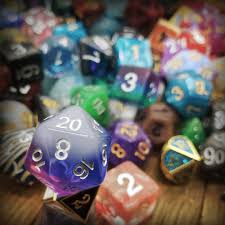How To Play Dungeons and Dragons

Thinking about playing Dungeons and Dragons? This guide is for you! Dungeons and Dragons is a tabletop roleplaying game made in 1974 by Gary Gygax. A tabletop roleplaying game is a game where players take on the role of a character that they create and go on adventures through all genres with a group of friends. One player takes on the role of the Dungeon Master or DM, and they are responsible for controlling the world around them. Millions of people play this game worldwide and because of its recent appearance in the show Stranger Things This guide will walk you through the three core aspects of playing the world’s greatest game, Dungeons and Dragons!
Creating a Character
The first and most important part of playing Dungeons and Dragons is creating a character. This is who you will use to maneuver through the adventures and challenges that your party faces. Characters can start from a preconceived concept of who you want to play and then translate that into the game’s mechanics, or you can start by looking through the options one at a time then make decisions about your character gradually.
The first character options that the Player’s Handbook 5th Edition provides are races. There are some of the more well-known races, such as elves, dwarves, and humans but there are also unique races like the half-demon Tiefling or the scaly Dragonborn. Each race comes with a variety of different traits like stat increases or proficiencies.
The next character option you can choose is the class of your character. Class is what determines your character’s capabilities, their class can give them the ability to cast spells or give them a mastery of weapons. There are twelve classes in the fifth edition of Dungeons and Dragons. These include wizards, barbarians, druids, fighters, paladins, artificers, monks, rangers, warlocks, sorcerers, bards, and clerics. Classes also determine your starting equipment and proficiencies in skills.
The Player’s Handbook. 5th Edition also provides premade backgrounds for your character. These can provide your characters with different proficiencies and skills. None of these choices are set in stone as you can always ask your Dungeon Master to design custom elements for your character.
Basics of Playing
Now that you have designed your character, it’s time to learn how to play them. The most core mechanic of playing D&D is rolling dice to determine the outcome of your character’s decisions. Your character will have a number of stats assigned to them by rolling four six-sided dice, dropping the lowest number, and adding the remaining numbers together. The stats that your character will have are strength, wisdom, dexterity, intelligence, constitution, and charisma.
The easiest way to understand DND stats is by using the “Tomato Analogy.” The strength stat is your character’s ability to crush a tomato, dexterity is your character’s ability to dodge a tomato thrown at them, constitution is your character’s ability to not fall sick after eating rotten tomato, intelligence is knowing a tomato is a fruit, wisdom is knowing that a tomato should not be in a fruit salad, and charisma is your character’s ability to sell a fruit salad with tomatoes in it.
Depending on the stats that you rolled for your character’s stats, there will be a modifier included in the Player’s Handbook. 5th Edition. Your character’s stats are important as they determine the number added to your roll for ability checks. Ability checks are rolls you make with a twenty-sided die as a response to an event happening in-game. Your DM sets a difficulty class -or “DC”-which is the number you have to roll to pass the check. You also use your stats for a different kind of roll called a saving throw. Saving Throws are responses to events with more serious consequences. Saving throw and check modifiers can also be determined by your proficiency bonus. Your proficiency bonus is a modifier to any kind of roll that your class, race, or background says you are proficient in. At level one, your proficiency bonus is +2 but it increases as your character’s level progresses. At first ability checks, stats, and saving throws might seem overwhelming but if you keep playing and get to know your character more then it will be like second nature.
Combat
The basics of dice rolling are important because another event that can occur in a session of D&D is combat. Combat starts with everyone rolling initiative, which is another twenty-sided die roll that determines the order of combat. Your DM will control the monsters you are fighting against and use their abilities to try and hinder your group. On your turn, your character will have access to movement, an action, a bonus action, and a reaction. Movement can be taken at any time during your turn and can be broken up throughout it; your character will have a movement measured in feet assigned to them by their race. As an action, your character can attack, cast a spell, hide, dash, or use an item. Bonus actions are more class-specific but universal bonus actions include picking up an item, making an offhand attack, or casting any spell with a casting time of one bonus action. Reactions are the least frequent of the four only occurring with a class feature or when somebody leaves a character’s melee range causing an opportunity attack. An attack requires a character to make an attack roll against their target’s armor class, a number assigned to a character through the armor they are wearing, and if they roll that number or greater they roll the damage dice associated with that weapon. Your character has a certain number of hit points given to them when choosing a class. When your character runs out of hit points they fall unconscious. If a character begins their turn unconscious they have to make a death-saving throw. No modifiers are applied to a death save despite being considered a saving throw. If you roll below a ten on your death save then that character has one “failed save.” You repeat this process on each of your turns that your character is unconscious until you have either three failed saves, in which case your character dies, or you have three successes which means your character is stabilized. A stabilized character still is unconscious but no longer has to make death-saving throws.
Now that you have been taught the basics you will be able to play with your friends! Dungeon and Dragons allows you to create memorable moments with your party. I hope you found this article helpful and enjoy developing your character and having lots of fun playing!











